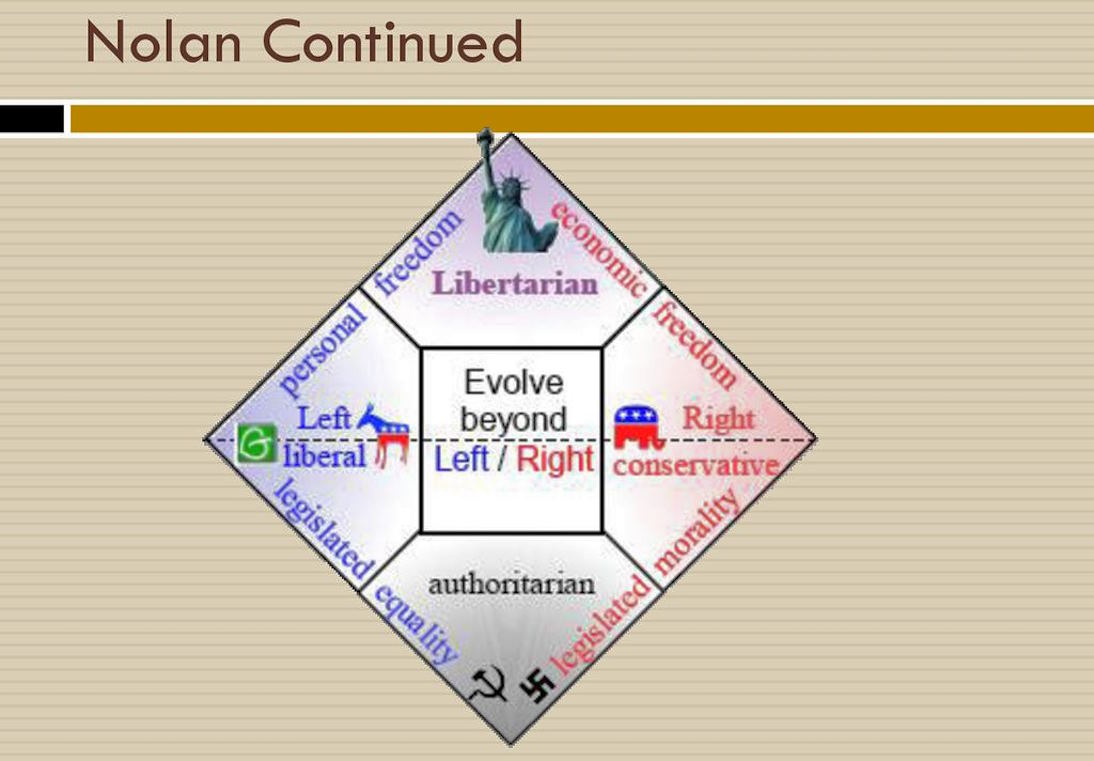
The Nolan Chart, a two-dimensional political spectrum created by David Nolan, offers a nuanced approach to understanding political ideologies. By categorizing beliefs based on personal and economic freedom, it provides a more comprehensive framework than the traditional left-right spectrum. This article explores the relevance of the Nolan Chart in assessing global political systems and how it shapes global political discourse.
Understanding global political landscapes with the Nolan chart framework
The Structure of the Nolan Chart
The Nolan Chart categorizes political ideologies into four quadrants based on two axes: personal freedom and economic freedom.
Personal Freedom Axis:
- High Personal Freedom: Supports civil liberties, freedom of expression, and individual rights.
- Low Personal Freedom: Favors government control over personal behaviors and social norms.
Economic Freedom Axis:
- High Economic Freedom: Advocates for free markets, minimal government intervention in the economy, and property rights.
- Low Economic Freedom: Supports government regulation, social welfare programs, and economic equality.
The Four Quadrants
- Libertarian:
High personal freedom and high economic freedom.
Advocates for minimal government intervention in both personal and economic matters.
- Authoritarian:
Low personal freedom and low economic freedom.
Supports strong government control over personal lives and the economy.
- Conservative:
Low personal freedom and high economic freedom.
Prefers economic freedom with government-imposed social order and traditional values.
- Liberal:
High personal freedom and low economic freedom.
Emphasizes civil liberties and social equality, often advocating for welfare state policies.
The Relevance of the Nolan Chart in Assessing Global Political Systems
Diverse Political Landscapes
The Nolan Chart helps to understand the complex political landscapes of various countries by providing a multi-dimensional analysis.
Examples:
- United States: Political parties and movements can be mapped across all four quadrants, with libertarians advocating for minimal state intervention and progressives emphasizing social liberties and economic regulation.
- China: An authoritarian system with low personal and economic freedoms, albeit with some market-oriented reforms.
- Sweden: A social democratic model that combines high personal freedom with significant economic regulation and social welfare.
Beyond the Left-Right Spectrum
The Nolan Chart transcends the limitations of the traditional left-right political spectrum, offering a more nuanced view of political ideologies.
Key Insights:
Recognizes the importance of both personal and economic freedoms.
Highlights the diversity within political ideologies that are often grouped together in traditional models.
Policy Implications
By understanding where a country or political movement falls on the Nolan Chart, policymakers can better address the specific needs and values of their constituents.
Policy Applications:
- Crafting policies that balance personal and economic freedoms.
- Identifying potential areas of conflict or alignment between different political groups.
Nolan chart shapes global political discourse
Shaping Political Identity
The Nolan Chart provides individuals and groups with a clearer understanding of their political identity and ideology.
Key Benefits:
- Encourages political self-awareness and informed voting.
- Fosters a more engaged and educated electorate.
Enhancing Political Debate
The multi-dimensional nature of the Nolan Chart promotes more substantive and nuanced political debates.
Debate Enhancements:
- Encourages discussions that go beyond simple left-right binaries.
- Facilitates understanding of complex political issues and ideologies.
Educational Tool
The Nolan Chart serves as an effective educational tool for teaching political science and civic education.
Educational Uses:
- Helps students and citizens understand the diversity of political thought.
- Provides a framework for analyzing political systems and ideologies.
The Nolan Chart is a powerful tool for understanding and assessing global political landscapes. By providing a multi-dimensional framework, it offers a more comprehensive view of political ideologies than the traditional left-right spectrum. Its relevance extends to shaping political identity, enhancing debate, and serving as an educational tool. As global politics continue to evolve, the Nolan Chart remains a valuable framework for analyzing the intricate relationships between personal and economic freedoms across different cultures and political systems.


